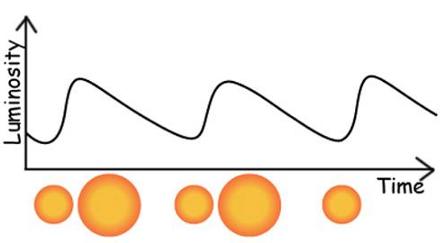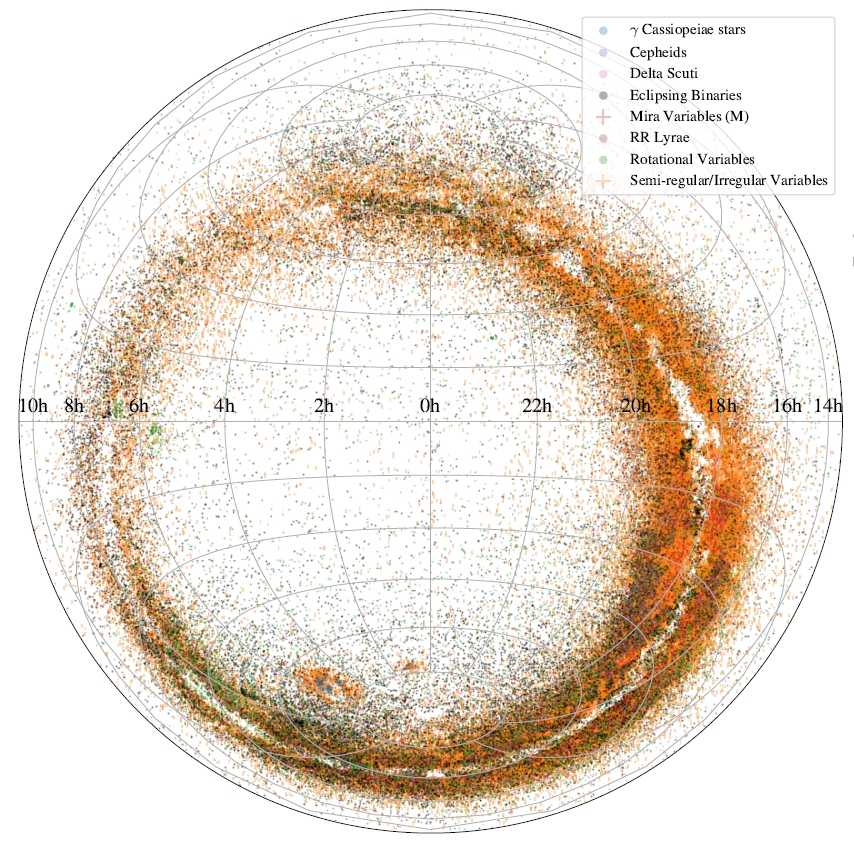You are here
Seeing Variable Stars with Spectroscopic Eyes
A variable star is a star whose brightness as seen from the Earth fluctuates. Variable stars are useful astrophysical tools that can be used to study the lives and deaths of stars, as well as stellar populations and Galactic structure.
Recently, a research team led by the Ohio State University has identified about 426 thousand variables, including about 219 thousand new discoveries, based on data from the All-Sky Automated Survey for SuperNovae (ASAS-SN). Using the spectroscopic information from LAMOST, GALAH, RAVE, and APOGEE, researchers studied the physical and chemical properties of these variables. The results have been published in Monthly Notices of the Royal Astronomical Society.
Modern large scale photometric sky surveys, such as the ASAS, ASAS-SN, and so on, have revolutionized the study of stellar variability. At the same time, large-scale wide-field spectroscopic surveys, e.g. LAMOST, APOGEE, GALAH and RAVE, have been making medium/high resolution spectroscopic observations of millions of Galactic stars, which are invaluable for deciphering the chemical evolution of stars and our Galaxy.
"Variable stars that have both extensive time-series data and spectroscopic observations will allow for the study of stellar evolution to great detail," said Tharindu Jayasinghe, the lead author of the research paper.
The researchers produced V-band light curves for a total of about 61.5 million sources with the ASAS-SN data and systematically searched for variability. They identified about 426,000 variables, 219,000 of which were new discoveries.
To study their physical and chemical properties, the researchers cross-matched their catalog with the catalogs of LAMOST, APOGEE, GALAH and RAVE, and obtained about 40 thousand matches where LAMOST contributed the most. "The LAMOST survey provides the only data set out of the four that samples all the major variability classes in our catalog," said Tharindu.
Through an exhaustive analysis, the researchers find that metal-poor eclipsing binaries have orbital periods that are shorter than metal-rich systems at fixed temperature. Rotational variables are identified on the main-sequence, red giant branch and the red clump, and over 80% of the rotating giants are fast rotators. For semi-regular variables, the longer pulsation period they have, the less aluminum content they possess. The variables with pulsation period over 60 days are significantly depleted in aluminum.

Figure1: Schematic picture showing the light curve of a Cepheid, which is a typical pulsating variable star. (Image from the web)

Figure2: Projected distribution of the ~ 219,200 new ASAS-SN discoveries in Equatorial coordinates. The points are colored by the variability type. (Credit: Tharindu Jayasinghe)
The paper can be accessed at https://academic.oup.com/mnras/advance-article/doi/10.1093/mnras/stab114/6101228.
